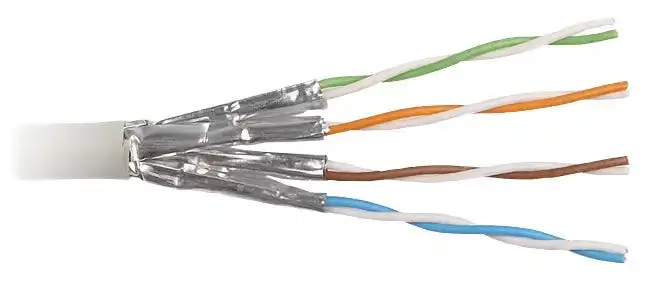
Shielded Twisted Pair (STP) Cables Explained
Shielded Twisted Pair (STP) cables are a vital component in modern network infrastructures, especially in environments where electromagnetic interference (EMI) can disrupt data transmission. In this comprehensive guide, we will explore what STP cables are, how they work, their benefits, common applications, and tips for proper installation and maintenance. Whether you're upgrading your network cabling or planning a new installation, understanding STP cables is essential for ensuring high-quality, reliable connectivity.
What Are STP Cables?
Shielded Twisted Pair cables are similar to Unshielded Twisted Pair (UTP) cables but include an additional layer of conductive shielding. This shield, which can be a foil, braided mesh, or both, surrounds either each pair of wires or the entire cable. The purpose of this extra layer is to block electromagnetic interference from external sources and minimize crosstalk between cable pairs, ensuring cleaner signal transmission even in high-interference environments.
How Do STP Cables Work?
The core function of STP cables is to protect data signals from EMI and radio frequency interference (RFI). Here’s how they achieve that:
- Shielding Material: The conductive layer, often made from aluminum foil or copper braid, acts as a barrier to external noise, effectively filtering out interference before it reaches the wires.
- Twisted Pair Design: Like UTP cables, STP cables also feature pairs of wires twisted together. This twisting further cancels out any residual electromagnetic noise.
- Enhanced Signal Integrity: The combination of twisting and shielding leads to improved signal quality, making STP cables ideal for environments with heavy electronic equipment or industrial machinery.
Advantages of STP Cables
STP cables offer several key advantages over their unshielded counterparts:
- Superior EMI Protection: The additional shielding significantly reduces electromagnetic and radio frequency interference, which is crucial in areas with high electrical noise.
- Improved Data Transmission: With less interference, STP cables provide clearer, more reliable data signals, which is essential for high-speed networks.
- Versatility: STP cables come in various shielding configurations, such as individual pair shielding or overall cable shielding, allowing customization based on the specific interference challenges of your environment.
- Enhanced Security: The shield not only protects against interference but can also deter data tapping and other forms of eavesdropping, adding an extra layer of network security.
Common Applications of STP Cables
STP cables are widely used in environments where interference is a major concern. Some common applications include:
- Industrial Settings: Factories and manufacturing plants with heavy machinery benefit from the superior EMI protection provided by STP cables.
- Data Centers: In data centers where high-speed data transmission is critical, STP cables help maintain signal integrity despite the presence of numerous electronic devices.
- Office and Commercial Networks: Businesses with dense networking environments often use STP cables to minimize crosstalk and maintain high performance.
- Broadcast and Audio/Video Systems: The clear signal transmission offered by STP cables is ideal for systems requiring high fidelity and minimal interference.
Installation and Maintenance Tips
For optimal performance of STP cables, proper installation and regular maintenance are key:
- Follow Industry Standards: Ensure your installation complies with standards such as TIA/EIA to maximize performance and safety.
- Maintain Proper Grounding: Proper grounding of the shield is crucial. Incorrect grounding can lead to performance issues and reduced interference protection.
- Avoid Excessive Bending: To preserve the integrity of the shield and internal wiring, avoid sharp bends and twists in the cable.
- Regular Inspections: Periodically inspect cables and connectors for signs of wear or damage to prevent future connectivity issues.
Conclusion
Shielded Twisted Pair (STP) cables are an excellent choice for environments prone to electromagnetic interference, offering enhanced signal clarity and reliability. Their robust design, which includes additional shielding, makes them indispensable in industrial, commercial, and high-performance networking scenarios. By choosing the right STP cable and following best practices for installation and maintenance, you can ensure that your network remains secure, efficient, and future proof.
In summary, whether you are dealing with high EMI environments or require extra security for data transmission, STP cables provide the advanced protection and performance your network demands. Embrace the benefits of STP cabling to maintain a robust and interference-free connection across your infrastructure.